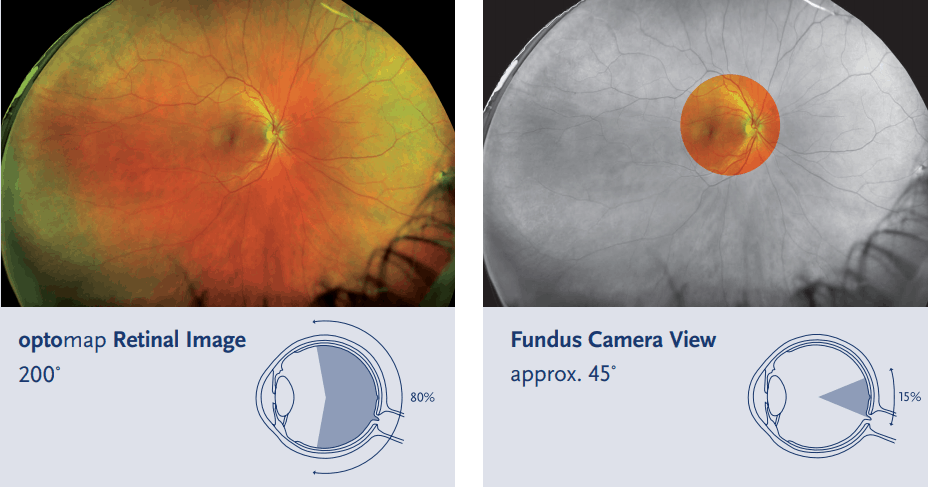We have just invested in a brand-new, state-of-the-art laser Optos eye scanner to provide the best in eye heath care for our patients.
The Optos Monaco is currently one of only 15 machines in the country, and combines both an OCT scan, and an ultra wide image of the retina known as an Optomap.
The Optomap high resolution image replaces the retinal camera and enables a much wider and highly magnified view of not only the central retina, but also the peripheral retina. Whereby traditional methods typically reveal only 15% of the retina at one time, the Optomap captures more than 80% of the retina in one panoramic image. This enables much earlier detection of many retinal abnormalities.
The Optos eye scanner can pick up:
- Retinal holes
- Retinal degeneration
- Retinal tears
- All of the above can lead to sight threatening retinal detachments
- Retinal freckles/naevi and cancers (melanomas)
- Retinal blood vessel abnormalities caused by diabetes, high blood pressure or blood vessel clots.

The OCT scan provides information on the deeper layers of the retina, beneath the surface layer that we have historically looked at. This gives us more detailed information to diagnose early signs of macular degeneration, glaucoma and diabetic retinopathy.
Many eye problems can develop without you knowing – in fact, you may not even notice any change in your vision. Fortunately, many eye diseases and other health problems can now be identified years earlier with the use of this combination of laser scanning imaging. Early detection of any retinal abnormality may lead to earlier and safer treatments and in many cases prevent vision loss.
The scan is very quick and comfortable, with the images available immediately for your optometrist to discuss with you in detail.
Lesley commented “This piece of equipment was a big investment for us, but demonstrates our total commitment to patient care, enabling us to provide the most thorough eye examination possible” Please pop in or give us a ring on 0115 9332999 to book an eye examination.


